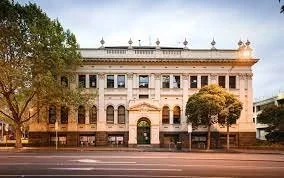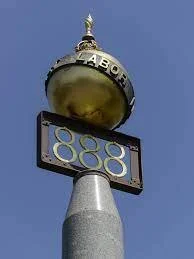Labour Day: where it came from and why it matters
Our Labour Day public holiday, celebrated in Victoria on the second Monday of March every year, has its origins in one of the union movement’s most momentous victories. This massive win, which we now consider a given condition in any fair and equitable workplace, has had worldwide influence and implementation and it all began right here in Australia, with movements of workers in NSW and Victoria.
In the 1800s, most Victorians worked up to 14 hours a day, six days a week. There was no sick leave, no holiday leave, and employers could sack employees at any time, without giving a reason. In the 1850s, Victoria was flooded with migrants. Many of these were British tradesmen who had been involved with the workers' movement in England. They brought with them a determination to achieve fairer working conditions, including reduced working hours.
On 21 April 1851 the Victorian Stonemasons downed their tools and marched to Parliament House with other members of the building trade. The Stonemasons had been working on the construction of the Old Quadrangle Building at the original site of The University of Melbourne
Trades Hall building, Carlton.
During the courageous march, workers carried banners that depicted the symbol of ‘888’, which represented the ideal that the workers were fighting for – '8 Hours Work, 8 Hours Recreation, 8 Hours Rest'. Coined as early as 1817 by Robert Owen, an English Socialist, this significant motif of the slogan would later adorn many of Australia's union buildings.
The government agreed that workers employed on public works should enjoy an eight-hour day with no loss of pay and stonemasons celebrated with a holiday and procession on Monday 12 May 1856, when about 700 people from 19 trades marched. The ‘888’ monument across the road from our Victorian Trades Hall in Carlton is a commemoration of this significant movement in Australian and international labour history.
citycollection.melbourne.vic.gov.au
Another victory that came from the Melbourne demand for the Eight Hour Day was that the Victorian trade union movement began to plan a permanent location. They were granted land on the corner of Lygon and Victoria Streets in 1858, where they built the world's very first Trades Hall building, which remains the movement’s headquarters today.
Despite these world-first milestones, it took more campaigns and struggles by trade unions to extend the reduction in hours to all workers in Australia. In 1916 the Victoria Eight Hours Act granted the eight-hour day to all workers in the state.
The eight-hour day was not achieved nationally until the 1920s. The Commonwealth Arbitration Court gave approval for the 40-hour five-day working week for the entire nation beginning on 1 January 1948. The achievement of the eight-hour day has been described by historian Rowan Cahill as "one of the great successes of the Australian working class during the nineteenth century, demonstrating to Australian workers that it was possible to successfully organise, mobilise, agitate, and exercise significant control over working conditions and quality of life. The Australian trade union movement grew out of eight-hour campaigning and the movement that developed to promote the principle".
Industrial workers of the world lay down the law.
Elsewhere around the world, most employed people in the industrialised world had to wait until the early or mid-twentieth century for the eight-hour day to be achieved through legislative action. Internationally, Labour Day is also known as May Day and is celebrated in most countries on 1 May, the date also chosen to be International Workers' Day to commemorate the 1886 Haymarket Affair in Chicago, a general strike for the eight-hour workday inspired by the Australian workers movements.
That strike turned violent, and police responded by firing on workers, with almost 200 workers either killed or injured. Hundreds of labour leaders and sympathizers were later rounded-up and four were executed by hanging, after a trial that was later deemed a miscarriage of justice.
After the eight-hour day was achieved, May Day/Labour Day remained an annual expression of solidarity with any workers whose expressed demands for fair work have not been delivered.
Labour Day is a day to remember what has been fought for, the lives lost in the process and the battles still to be won by workers all around the world.
We do have power, we do have solidarity and united we can continue to change the world for the better.




